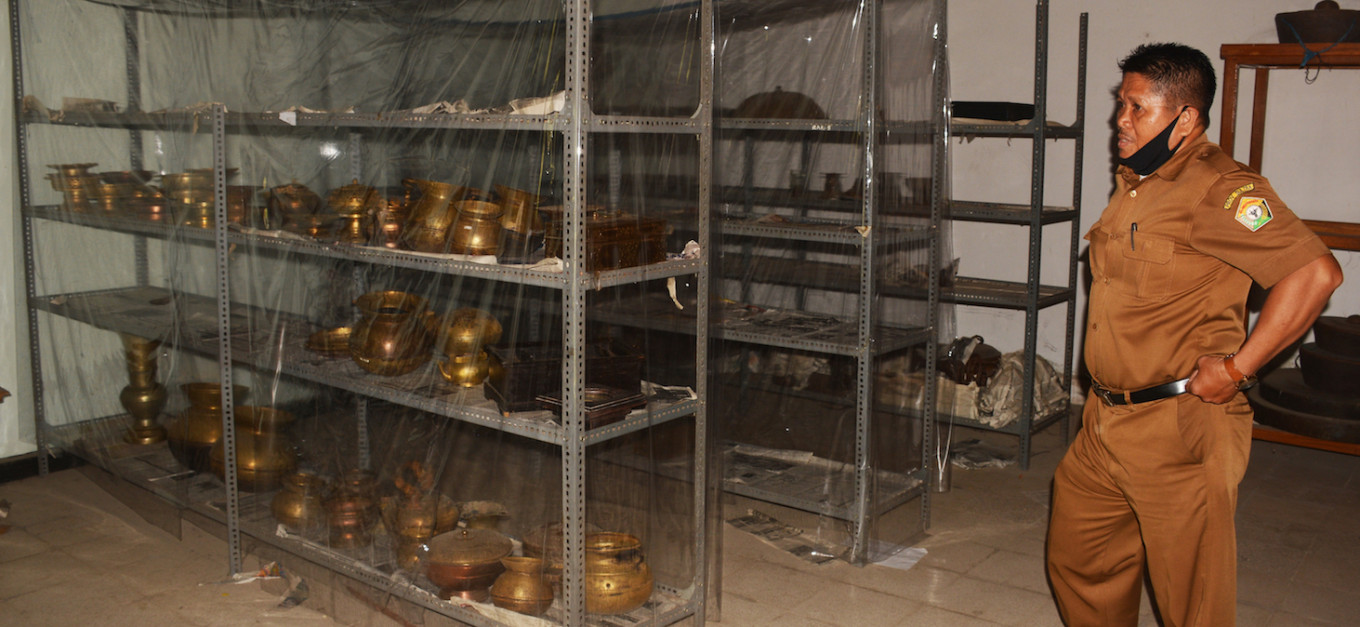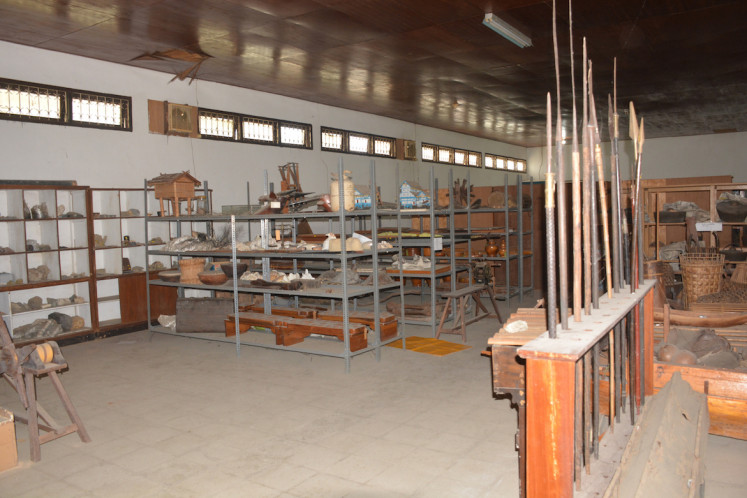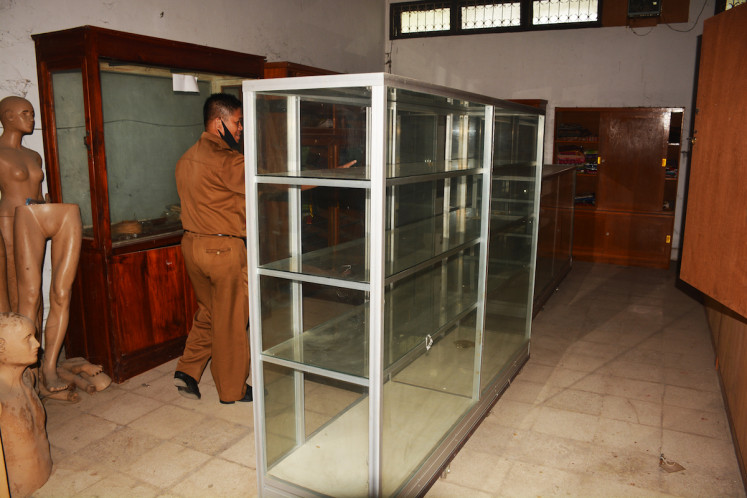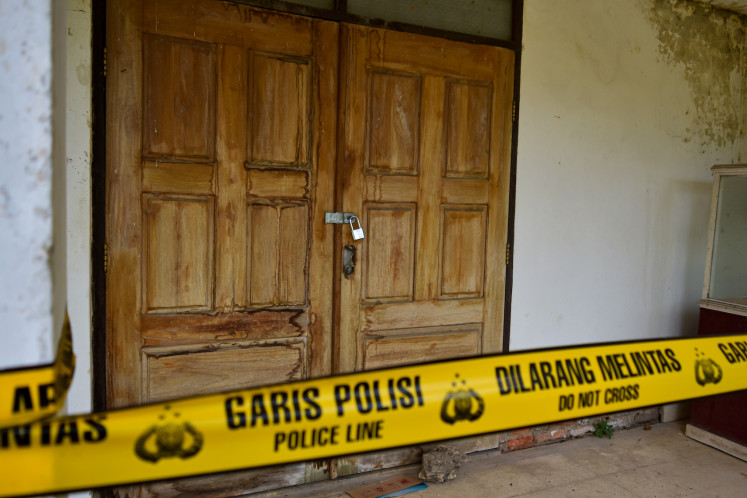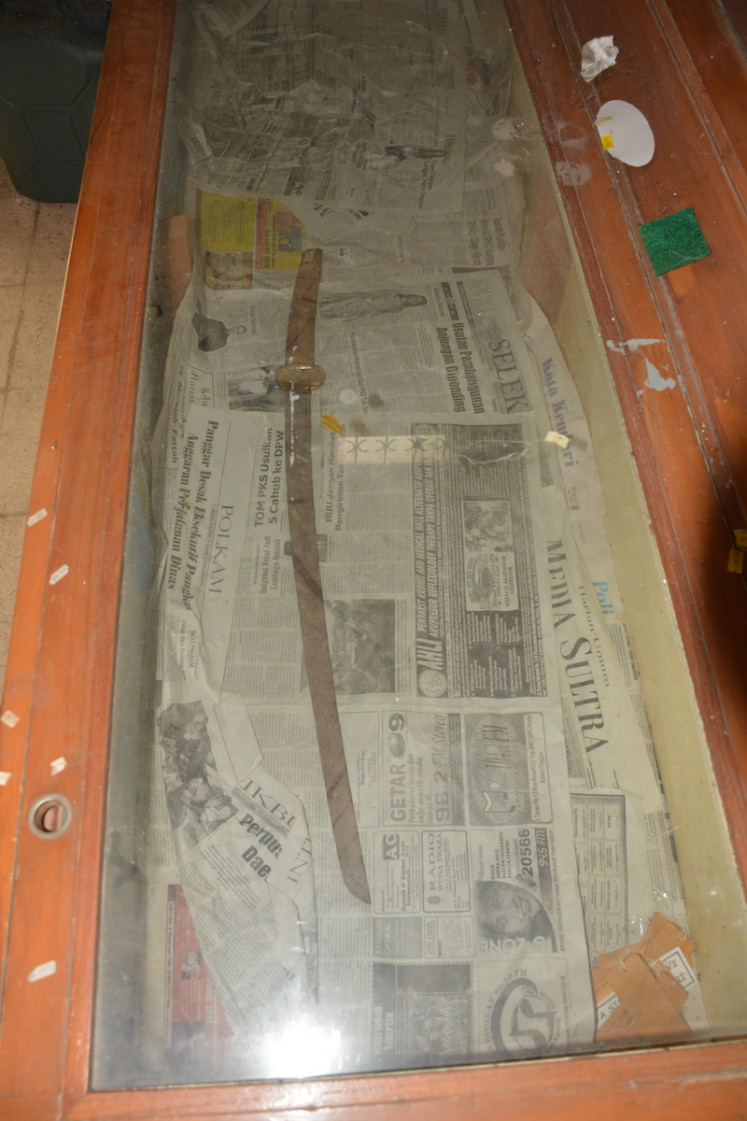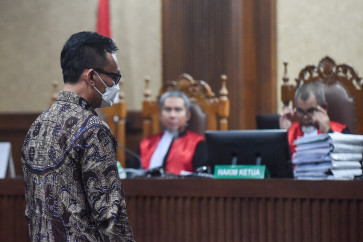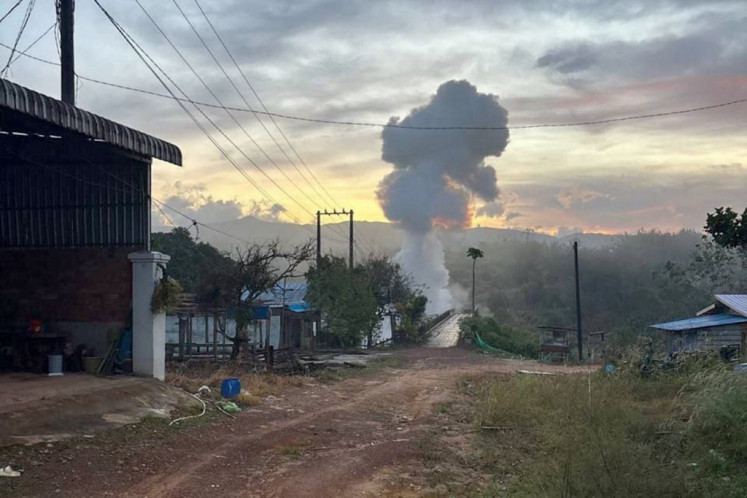Popular Reads
Top Results
Can't find what you're looking for?
View all search resultsPopular Reads
Top Results
Can't find what you're looking for?
View all search resultsThe sad state of Indonesian museums
The January burglary of the Southeast Sulawesi museum shows that Indonesian museums need more support, funding and updating amid the international efforts to repatriate looted art and artifacts.
Change text size
Gift Premium Articles
to Anyone
I
nternational discourse on the repatriation and decolonization of looted art and artifacts has produced tangible results in recent years, as in the case of the Netherlands government returning thousands of historical artifacts to the Indonesian government just last year.
Unfortunately, Indonesia may not always be ready to accommodate the care and storage of its repatriated heritage assets.
The State Museum of Southeast Sulawesi in the provincial capital of Kendari lost 668 historical objects overnight on Jan. 25, 2021. The museum had around 1,500 artifacts that the Netherlands government had returned to Indonesia in 2015-2019. No CCTV cameras or museum security were on site to catch the burglars in the act. The stolen items have not been recovered to date.
The provincial museum is the latest victim in the 28 museum thefts that have occurred in the country since 1961.
No budget for security
The following morning on Jan. 26, a janitor on his rounds at the Southeast Sulawesi museum was about to change the lights in the toilet when he saw that the door to the museum warehouse was broken. Shocked, he shouted to alert the rest of the museum staff, who joined him immediately.
Several rows of warehouse shelves that once held the original artifacts of the museum collection were empty, leaving behind only a damp, musty smell.
Museum head Dodhy Syarul Syah suspected that the burglary had taken place the previous night and that the perpetrator or perpetrators were familiar with the museum facility. They had come in prepared to break the padlock and the double-layer door made of teak and steel, the only security reinforcements installed at the warehouse.
“There are no CCTV [cameras] in the warehouse or yard. Only four [cameras] were installed in the exhibition room and no security staff,” Dodhy said in the empty warehouse.
Some of the items left by the robbers inside the warehouse (JP/Yogi Ishabib)“The problem is, the exhibition room only holds the replicas, the original [artifacts] were stored in this warehouse. And, to be honest, we lack the manpower and budget for security and maintenance,” he said.
The museum, built in 1978, looks neglected. Its whitewashed walls are dull, its columns covered with moss. The roof leaks, the yard is overgrown with weeds and the museum’s perimeter fence has no visible security measures, even relatively cheap barbed wire. The burglar is thought to have climbed over the fence, as indicated by the several museum pieces that lay scattered nearby.
The exact cost of the theft is still unknown. The majority of the stolen museum pieces were jewelry, weapons and antique trinkets. Several artifacts from the museum’s special Sulawesi tribal collection were also stolen.
Worse, 5,534 artifacts in the museum collection were not registered as cultural heritage objects. Some of the 668 stolen items were among these unregistered artifacts, so they would be easy to sell and traffic while tracking and recovering them would be even more challenging for law enforcement.
Baruga Police head Adj. Comr. Gusti Komang Sulastra told Berita Kota Kendari (Kendari City News) that the museum theft was under active investigation. The police recently traced a few items believed stolen from the museum, he added, but they were not.
Only 729 out of the thousands of original artifacts in the museum collection are exhibited, with the rest stored in the warehouse. The local quip that Indonesian museums are nothing more than glorified storerooms has been proven correct.
Poorly funded & outdated
The State Museum of Southeast Sulawesi stands on a 1.8-hectare plot and receives only Rp 200 million in annual funding from the Southeast Sulawesi provincial administration to cover operational expenses. Dodhy said the fund was insufficient to support the costs of exhibiting and maintaining the museum’s collection.
Contacted separately, director Ahmad Ryan Pratama of the Timur Lawu Historical Community said that many Indonesian museums were in dire straits.
“There are many problems. First, of course, is funding. Second, the programs and exhibitions. Museum should be able to involve the public and the [local] community when creating programs or exhibitions, so the public and museums can be connected. We have almost no memory of museums in our neighborhood,” said Ryan.
The simple entrance door the warehouse with a police line running around it (JP/Yogi Ishabib)This absence of community engagement with museums is one reason why museums feel like they have been abandoned by the public.
Ayos Purwoaji, an independent art history curator, said that the vision of Indonesian museums was out of date.
"Most museums in Indonesia still apply the classic European [concept] of ‘cabinets of curiosities’, a place to store exotic collections to amaze visitors," he said.
Instead of discussing decolonization, Indonesian museums still applied colonial European ideas and practices. Their collections are stored in stasis, waiting to be viewed, maintaining the museums as passive objects.
“Repatriation is not only a matter of returning the historical objects, but also our perspective on historical objects. When European countries began to worry about maintaining museum collections, they already had archives that were open and accessible to the public,” said Ayos.
In contrast to this archival process, Indonesian museums went the other way, reclaiming thousands of historical items that the Dutch colonizers had looted before they had either the facilities, funding or capacity to manage and maintain the nation’s heritage assets properly.
A sword. One of the few times not taken by the thieves. (JP/Yogi Ishabib)Indonesia’s historical and cultural objects are being returned, but our museums are poorly maintained and easily burglarized, and aside from dedicated history buffs and school trips, no one visits them anymore.
Mar'i Muhammad, Ika Nasution and Ivan Kurnia, are the 25-year-old codirectors of 25 and the Next Journey, a documentary film on Indonesian museums. The trio lamented the country’s lack of attention to its museums.
"Compared to a museum’s parking fee, the museum entrance ticket is cheaper. That’s funny, but also sad,” said Ivan.

